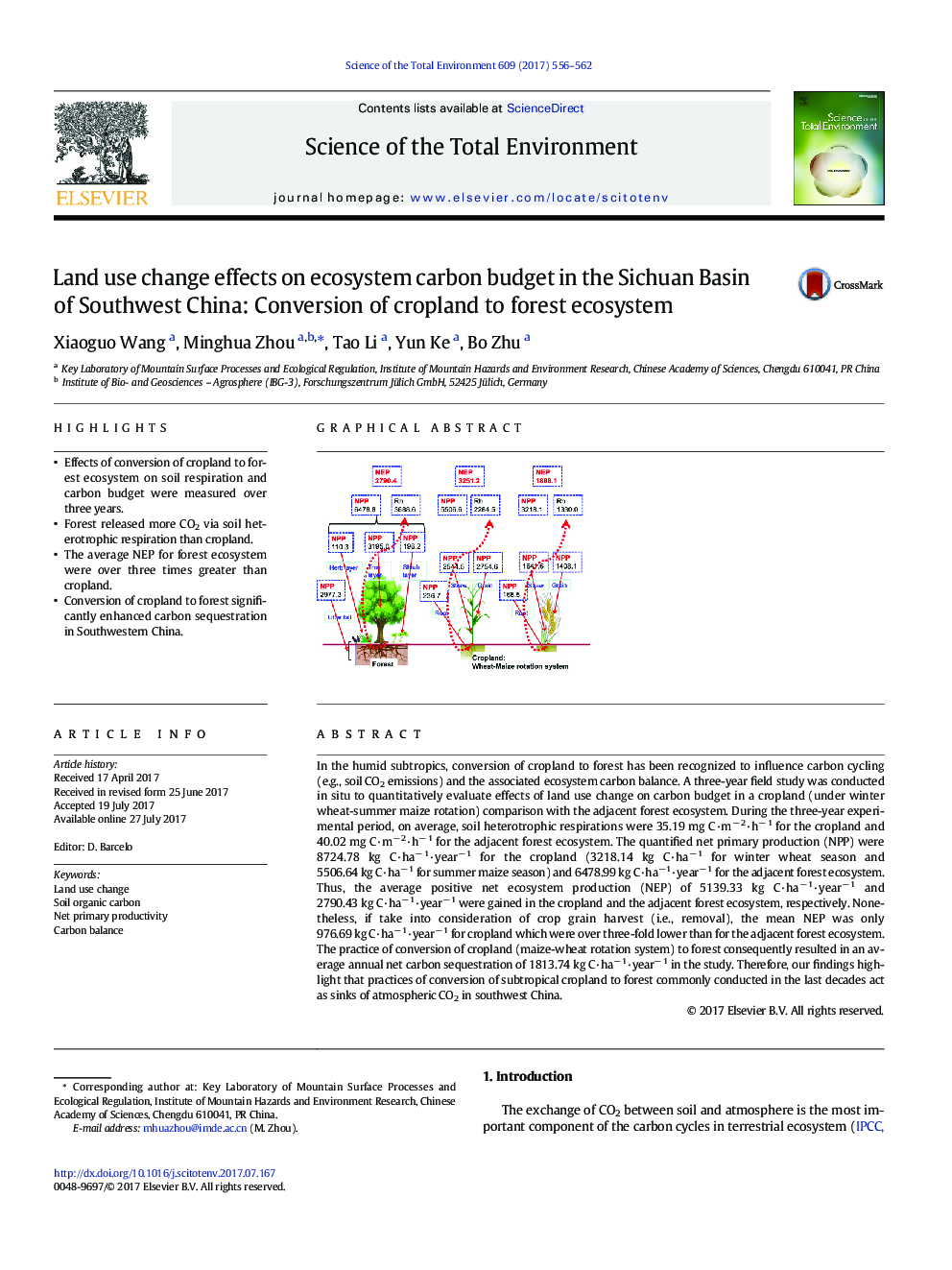| کد مقاله | کد نشریه | سال انتشار | مقاله انگلیسی | نسخه تمام متن |
|---|---|---|---|---|
| 5750783 | 1619693 | 2017 | 7 صفحه PDF | دانلود رایگان |
- Effects of conversion of cropland to forest ecosystem on soil respiration and carbon budget were measured over three years.
- Forest released more CO2 via soil heterotrophic respiration than cropland.
- The average NEP for forest ecosystem were over three times greater than cropland.
- Conversion of cropland to forest significantly enhanced carbon sequestration in Southwestern China.
In the humid subtropics, conversion of cropland to forest has been recognized to influence carbon cycling (e.g., soil CO2 emissions) and the associated ecosystem carbon balance. A three-year field study was conducted in situ to quantitatively evaluate effects of land use change on carbon budget in a cropland (under winter wheat-summer maize rotation) comparison with the adjacent forest ecosystem. During the three-year experimental period, on average, soil heterotrophic respirations were 35.19 mg C·mâ 2·hâ 1 for the cropland and 40.02 mg C·mâ 2·hâ 1 for the adjacent forest ecosystem. The quantified net primary production (NPP) were 8724.78 kg C·haâ 1·yearâ 1 for the cropland (3218.14 kg C·haâ 1 for winter wheat season and 5506.64 kg C·haâ 1 for summer maize season) and 6478.99 kg C·haâ 1·yearâ 1 for the adjacent forest ecosystem. Thus, the average positive net ecosystem production (NEP) of 5139.33 kg C·haâ 1·yearâ 1 and 2790.43 kg C·haâ 1·yearâ 1 were gained in the cropland and the adjacent forest ecosystem, respectively. Nonetheless, if take into consideration of crop grain harvest (i.e., removal), the mean NEP was only 976.69 kg C·haâ 1·yearâ 1 for cropland which were over three-fold lower than for the adjacent forest ecosystem. The practice of conversion of cropland (maize-wheat rotation system) to forest consequently resulted in an average annual net carbon sequestration of 1813.74 kg C·haâ 1·yearâ 1 in the study. Therefore, our findings highlight that practices of conversion of subtropical cropland to forest commonly conducted in the last decades act as sinks of atmospheric CO2 in southwest China.
266
Journal: Science of The Total Environment - Volume 609, 31 December 2017, Pages 556-562
